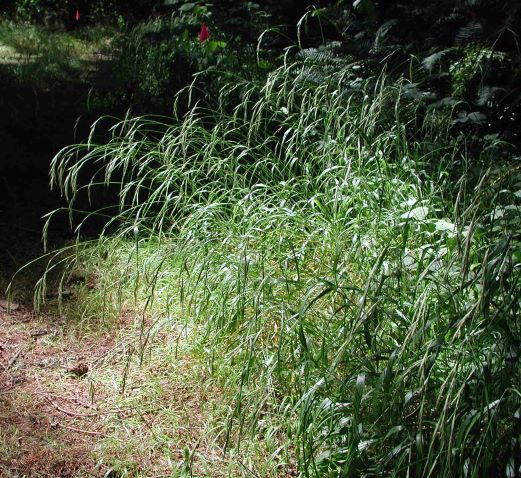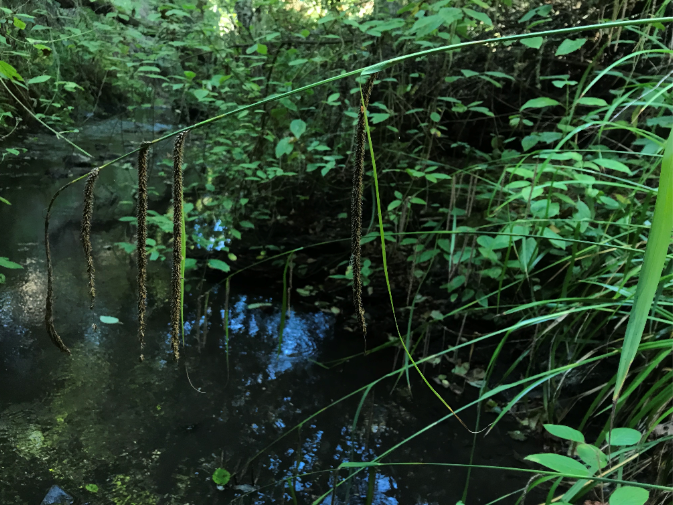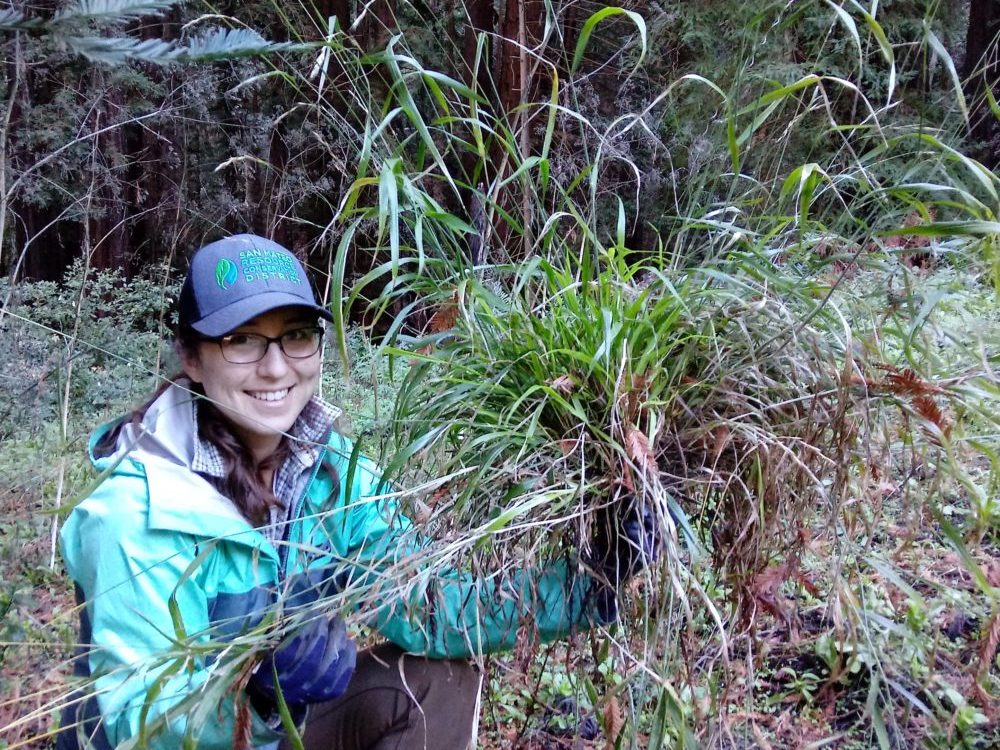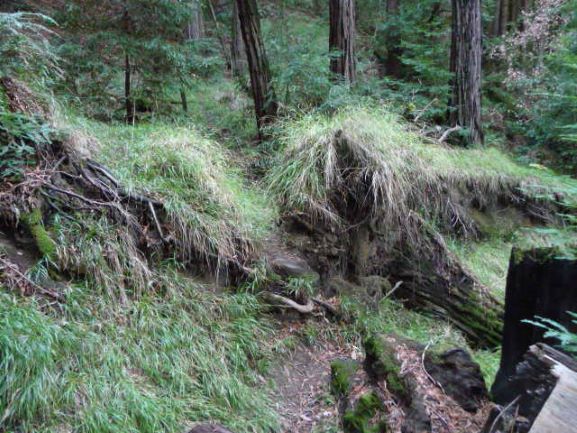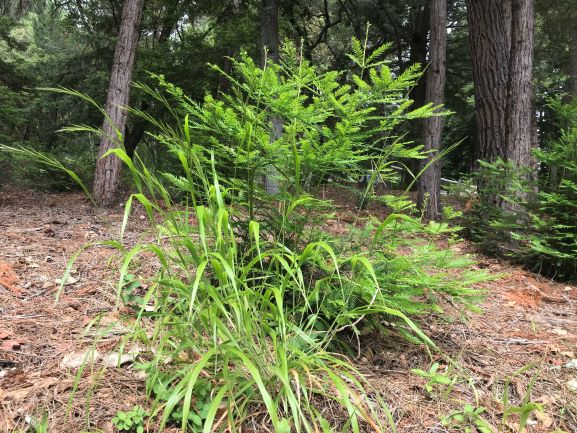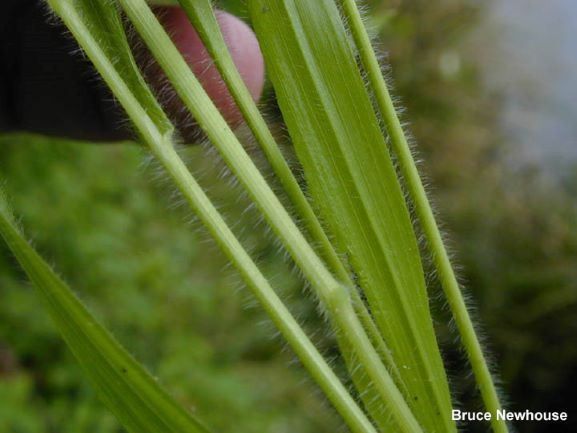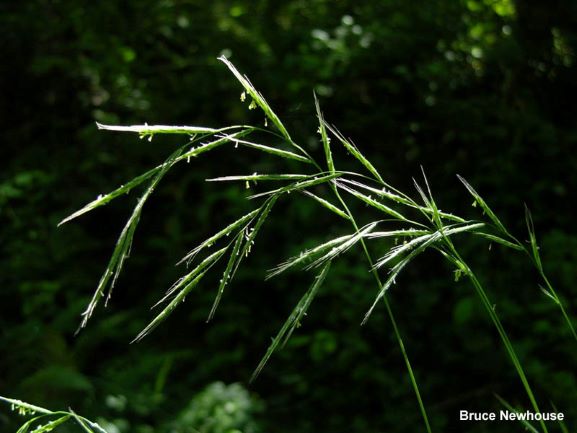Weed Management Programs
JOIN OUR SURVEY EFFORTS
We’re on the hunt for two kinds of weeds that are especially harmful to streams and wildlife, and we need your help. The good news is that we can still get them before they spread too far—saving everyone money and time. Become a part of the community of people helping protect their property and nature by tackling these weeds right in your own yard.
If you live in and around Kings Mountain, Woodside, or La Honda, we can look for these weeds on your property and may be able to get rid of them for you. All we need is your name and address.
Contact us to schedule a free survey!
The San Mateo RCD and the Midpeninsula Regional Open Space District (MROSD) have partnered up to protect the biodiversity of our forests and creeks from invasive species such as slender false brome and hanging sedge, but we can’t do it without you!
Partners:
- Midpeninsula Regional Open Space District (MROSD)
- Local landowners and land stewards
RCD Contact: Cleopatra Tuday
Slender False Brome
Brachypodium sylvaticum
Fast growing and extremely aggressive, slender false brome (Brachypodium sylvaticum) inhibits growth of tree seedlings and replaces surrounding vegetation. It can cover up to 90% of the ground if not managed — outcompeting pollinator-friendly plants and preventing water from penetrating the roots of larger tree species. Slender false brome is currently along the San Francisco Peninsula, the only known location in California.
History:
Slender False Brome (Brachypodium sylvaticum) is an invasive perennial bunchgrass originating from Europe, Asia and North Africa. Charmed by its year-round wide green foliage, Brachypodium sylvaticum was introduced to Oregon as an ornamental. This plant easily escaped into the wilderness and infested the Oregon west Cascades, now reaching over 10,000 acres. The grass forms a dense matt—shading out low growing plants and seedlings. It grows in a variety of conditions from full sun to shade, in habitats such as redwood, evergreen, riparian, oak woodland, and from sea level to 3500 feet. The plant is not palatable to wildlife or domestic animals and responds well to fire. Slender false brome’s adaptive nature makes in a high-priority invasive plant.
Within San Mateo County, Brachypodium sylvaticum was discovered in December 2003. By then it had already spread through Woodside, CA—into (MROSD) Thornewood Open Space Preserve and surrounding private property. MROSD began a program in 2009 to treat Brachypodium sylvaticum on private property. The project has since moved to the RCD, who specialize in resource conservation on private lands, but continue to work closely are funded by MROSD.
Identification
Despite its insidious nature, slender false brome is a beautiful, low growing bunchgrass with soft foliage. Slender False Brome is best identified by its distinct, glossy green leaves that stay bright through summer, versus other plants that grow dormant. The seeds hang from tall stalks giving the plant a fountain-like look. If you hold a leaf (blade) to the light you’ll see the edge of the leaf are lightly hairy despite the glossy sheen on the top and bottom.
Learn more by reading our identification guide!
Current extent
Brachypodium sylvaticum exists within California in San Mateo County, Santa Clara and Santa Cruz County. Out of the three counties, the population within San Mateo is the largest, at an estimated 300 acres. The other two counties contain small, satellite populations.
Within San Mateo, Brachypodium sylvaticum threatens San Francisquito, San Gregorio, and Tunitas watersheds. These watersheds encompass Woodside, Skyline, Kings Mountain, La Honda and San Gregorio. The populations vary between light scatterings of plants to almost 100% cover. It’s common to find slender false brome within drainages and along creek banks or within dappled sunlight along a trail in these areas.
Hanging Sedge
Carex pendula
While showy and beautiful with its fountain shape and soft texture, hanging sedge is devastating to our local creeks. This large grass-like plant converts diverse riparian habitat into singular monocultures, taking away needed habitat for wildlife and fish. Currently, hanging sedge is only in a few creeks across the Bay Area – giving us a unique opportunity to work with only a handful of landowners. It spreads via rhizomes and seeds within forest and riparian habitats. One plant can produce 20,000 seeds with a 90% germination rate. (Cal IPC)
History
Hanging sedge is a grass-like plant belonging to the same family as tule, bulrushes, spike rushes and other sedges. It comes from Europe where it inhabits wet woodlands.
Relative to many ecosystem changing plants that have been here for well over a couple decades, hanging sedge is new to San Mateo County. Hanging sedge was first located in California in 1989 in Butte County. Surveys for the plant increased following its discovery by the Bay Area Early Detection Network, where it was found within Muir Woods National Monument along Redwood Creek, Marin County.
In San Mateo County, hanging sedge was first sighted by local botanist John Rawlings who found a patch within Purisima creek Redwoods Open Space Preserve where the hunt was quickly picked up by Midpeninsula Regional Open Space District.
In 2019, working under the already running Slender False Brome Program, the RCD has teamed up with MROSD to expand survey work into Purisima creek on private lands for hanging sedge.
Identification
As its name suggests, hanging sedge is best noticed by tall arching stems that hold drooping flower ‘spikes’ that give it an attractive fountain-like look. Hanging sedge is a clump forming plant, spreading in dense patches through rhizomes within wetlands and stream sides. This plant stands between 3-6 feet tall, so it can take up a lot of space that’s needed for other riparian and forest plants. In cross section, like most true sedges, the wide yellow green leaves form an upside-down ‘W’. Another distinctive marker of hanging sedge is it’s red to purple base. If you pull the plant out, you’ll see green transition to red just above the roots
References: Cal-IPC Profile: Carex pendula
Current extent
Within California, hanging sedge is found within North, East and Peninsula regions of the Bay Area. In San Mateo County it grows within Purisima Creek and along Highway 35 near Kings Mountain. Hanging sedge’s habitat includes wetlands, stream sides, roadsides, and wet forests.
Stay Vigilant! Slender False Brome can be spotted any time of the year especially between March and May when the flowers are blooming in full force. Stay aware of your surroundings and contact the RCD if you need assistance on identification.
Plant Right! Hanging sedge is a beautiful ornamental plant in other parts of the world where it stays where it is planted, but not in California. Be a smart shopper and learn how the plants you buy for your yard interact with nature. PlantRight.org is a great resource.
Stay Clear! Always clean your clothes and shoes before and after you leave public or private trails. Use a stiff bristle brush to remove any weed seeds on your clothes and shoes.
Get Surveyed! It’s important to know if you have Slender False Brome or hanging sedge on your property. Schedule a site visit with the RCD. We’ll survey your property (free of charge) and inform you of any SFB on your property.
Get Treatment! There are many options for removing slender false brome and hanging sedge from your property. Small infestations can be hand pulled using your hands and a spade with any other weed. Larger infestations may take some help from the RCD who can offer a range of treatment options from hand pulling, mulching to chemical.
For the DIY’er, contact the RCD for treatment recommendations. We offer reimbursement of $415 per infested acre (acreage is predetermined by the RCD). Contact the RCD to find out how to get involved in the reimbursement program.
Contact RCD Biologist: Cleopatra Tuday, Cleopatra@sanmateoRCD.org
Frequently asked questions?
Q. Do I have to pay for a survey or for weed removal?
A. Our survey and treatment services are free. As the RCD we also provide free technical assistance. If you have questions about weeds other than slender false brome or hanging sedge we’re happy to help.
Q. Why should I care about these two invasive species in particular?
A. While slender false brome and hanging sedge are certainly not the only invasive species in San Mateo County, we have the unique ability to push back on their infestation throughout California. Ecologically, these two species can dynamically change an ecosystem if unchecked, destroying forest and creek habitat used by local wildlife. These species are aggressive colonizers, pushing out native species and can also invade gardens and landscaping. There is even some evidence that slender false brome’s matted form prevents rainwater from penetrating the ground, starving redwoods of needed water.
Q. How did these plants get here?
A. Slender false brome was first documented in the United States in Oregon. In San Mateo County, the plant wasn’t observed until 2004 within Woodside, CA. The grass may have hitch hiked over from the Mediterranean and Europe where it is native. Hanging sedge was first spotted in California in 1989 in Chico, CA. In San Mateo County, hanging hedge was found in 2011 within Purisima Creek Redwoods Open Space Preserve. We’re not sure how it came to California, there are other populations within the Bay Area, most notably along Redwood Creek within Marin County.
Q. How do you get rid of these weeds?
A. There are a variety of ways to remove slender false brome, all depending on the location and severity of the infestation. Hand pulling, tarping, and herbicides all work to remove this perennial grass. Hanging sedge is best removed manually using a weed wrench or trench shovel. Be careful of fragile creek banks. Do not throw away any plants with seeds! Seeds can spill out of waste trucks and spread elsewhere on their way to the landfill. Instead, make a small pile away from creeks that you can cover with a tarp or cardboard to let the seeds rot.
Resources:
https://www.cal-ipc.org/plants/profile/carex-pendula-profile/
https://www.calflora.org/cgi-bin/species_query.cgi?where-calrecnum=10523
https://weedwise.conservationdistrict.org/tag/hanging-sedge
https://www.openspace.org/our-work/projects/slender-false-brome
https://www.kingcounty.gov/services/environment/animals-and-plants/noxious-weeds/weed-identification/false-brome.aspx
https://extension.wsu.edu/whitman/2013/11/false-brome/
https://www.cal-ipc.org/plants/profile/brachypodium-sylvaticum-profile/
https://www.calflora.org/cgi-bin/species_query.cgi?where-calrecnum=9292

